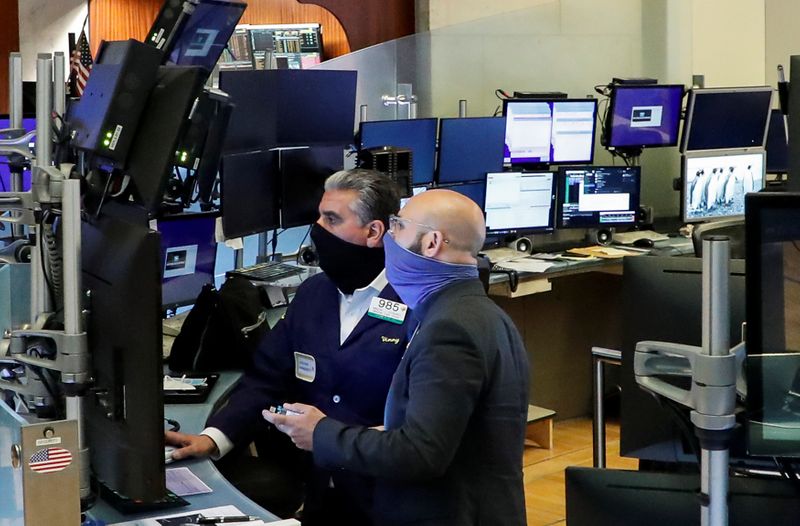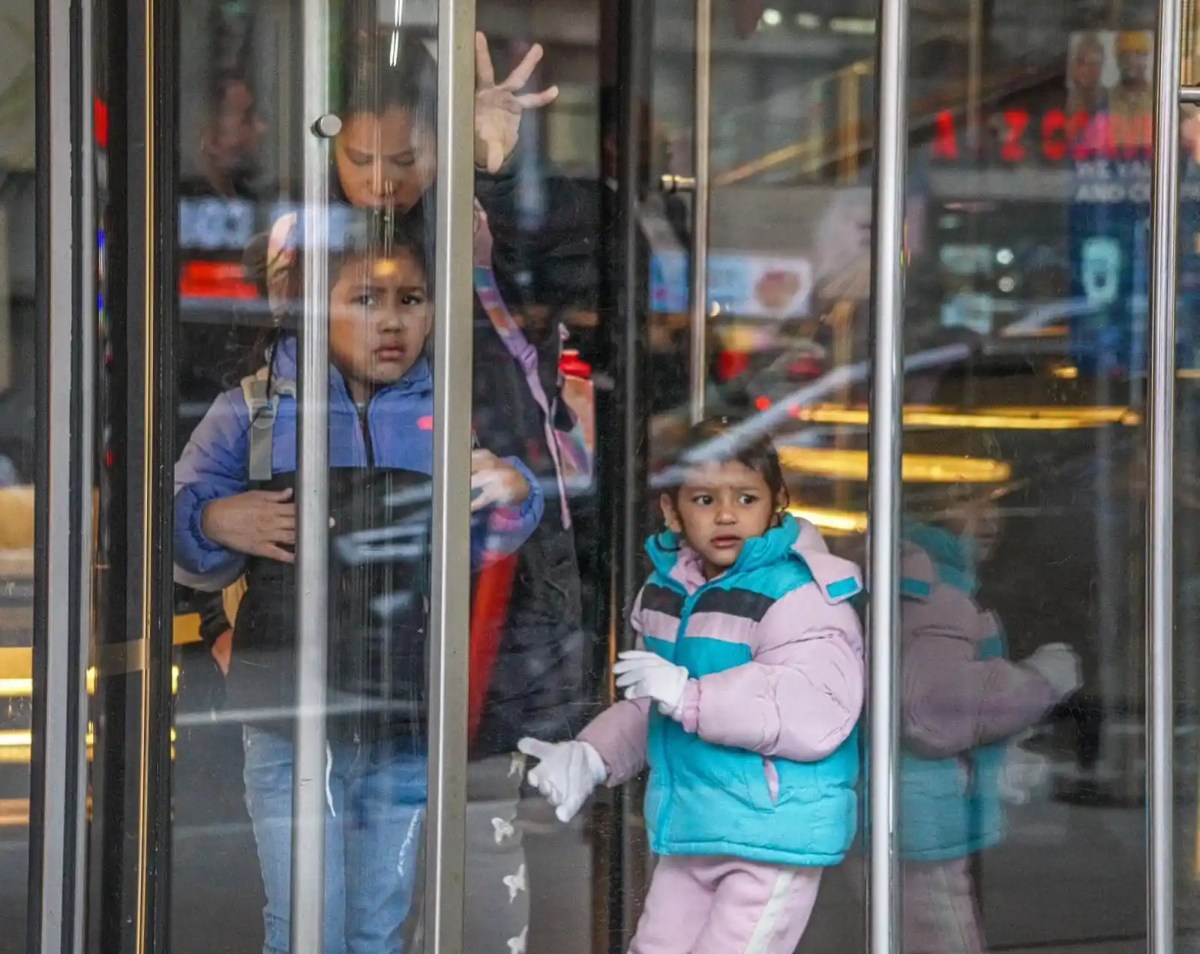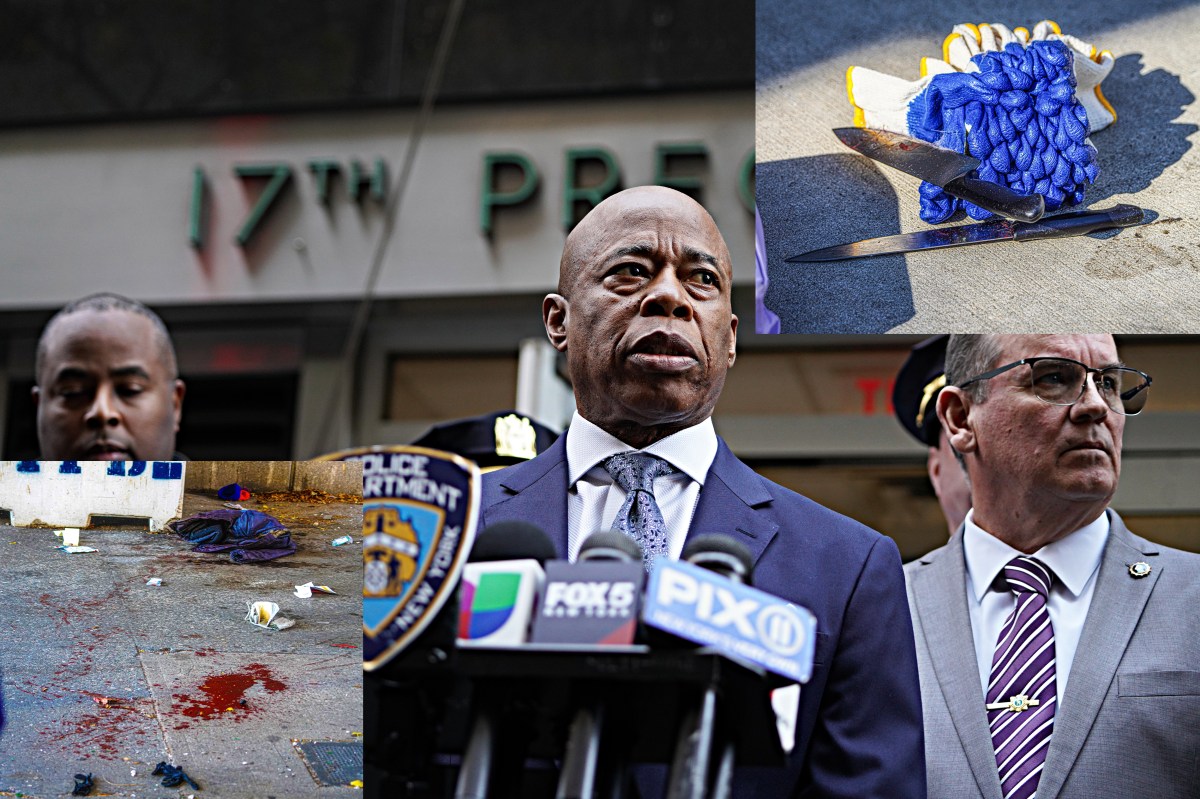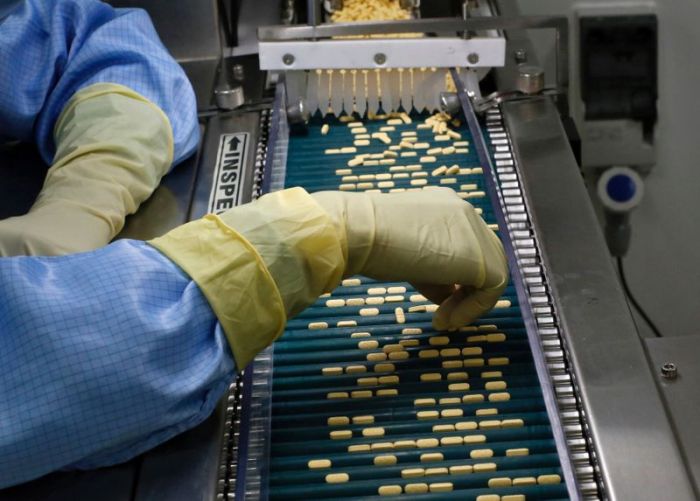(Reuters) – Wall Street surged on Tuesday, with the Dow Jones Industrial Average ending more than 2% higher as investors bought energy and materials stocks and looked beyond a recent rise in coronavirus cases.
In extended trade, Moderna Inc surged 18% after the biotech company’s experimental vaccine for COVID-19 showed it was safe and provoked immune responses in an ongoing early-stage study.
Extended trade in S&P 500 emini futures suggested investors expect Wall Street to rise on Wednesday, with the futures climbing 0.8%. Shares of airlines, cruise ship lines, hotel operators and concert promoters also jumped after the report by U.S. researchers on the Moderna vaccine study.
In regular trade on Tuesday, the S&P 500 energy, materials and industrial indexes jumped more than 2%, while health, technology and consumer staples each rose more than 1%.
Amazon.com Inc finished down 0.6%. A recovery from deeper losses by Amazon and other technology and growth stocks that recently have performed strongly, including Facebook and Netflix, gave the Nasdaq a last-minute spurt.
“Today is counterintuitive. We are reading about California’s economy shutting down and a record spike in cases in Florida, and yet you have energy stocks leading,” said Bob Shea, chief executive officer at TrimTabs Asset Management in New York. “We’re seeing a mini-rotation into value.”
JPMorgan Chase & Co, the largest U.S. lender, rose 0.6% after it posted a smaller-than-expected 51% drop in second-quarter profit.
Wells Fargo & Co tumbled 4.6% after booking a quarterly loss for the first time since the 2008 financial crisis. Citigroup Inc dropped 3.9% after it reported a steep fall in quarterly profit.
The S&P 500 banks index dropped 1.2% as the three banks set aside a combined $28 billion to cover potential losses on loans to borrowers hurt by the coronavirus pandemic.
Wall Street has reclaimed most of its coronavirus-driven losses since March as a raft of monetary and fiscal stimulus and upbeat economic data raised hopes of a swift post-pandemic recovery. But a recent record surge in COVID-19 cases and new business restrictions, particularly in California, have raised uncertainty anew about how long it may take for the economy to recover.
Alabama, Florida and North Carolina reported record daily increases in COVID-19 deaths on Tuesday.
Following a drop of more than 2% in the Nasdaq on Monday, some investors had worried that Wall Street’s recent rally might be ending. With Tuesday’s quick rebound, the Nasdaq has gone two months without suffering two days in a row of declines.
For a graphic on COVID-19’s growing potential economic impact:
https://fingfx.thomsonreuters.com/gfx/mkt/xlbpgoebepq/Pasted%20image%201594676240048.png
Investors are bracing for what could be the sharpest drop in quarterly earnings for S&P 500 companies since the 2008 financial crisis, according to Refinitiv IBES data.
The Dow Jones Industrial Average surged 2.13% to end at 26,642.59 points, while the S&P 500 gained 1.34% to 3,197.52. The Nasdaq Composite added 0.94% to 10,488.58.
Delta Air Lines Inc ended down 2.65% after it warned it will be more than two years before the industry sees a sustainable recovery from the “staggering” impact of the coronavirus pandemic, with demand largely tracking the curve of infections in different places.
Advancing issues outnumbered declining ones on the NYSE by a 1.92-to-1 ratio; on Nasdaq, a 1.63-to-1 ratio favored advancers.
The S&P 500 posted seven new 52-week highs and no new lows; the Nasdaq Composite recorded 35 new highs and 31 new lows.
Volume on U.S. exchanges was 10.7 billion shares, compared with the 11.8 billion average for the full session over the last 20 trading days.
(Reporting by Noel Randewich; Additional reporting by Medha Singh and Devik Jain in Bengaluru; Editing by Marguerita Choy and Leslie Adler)

























